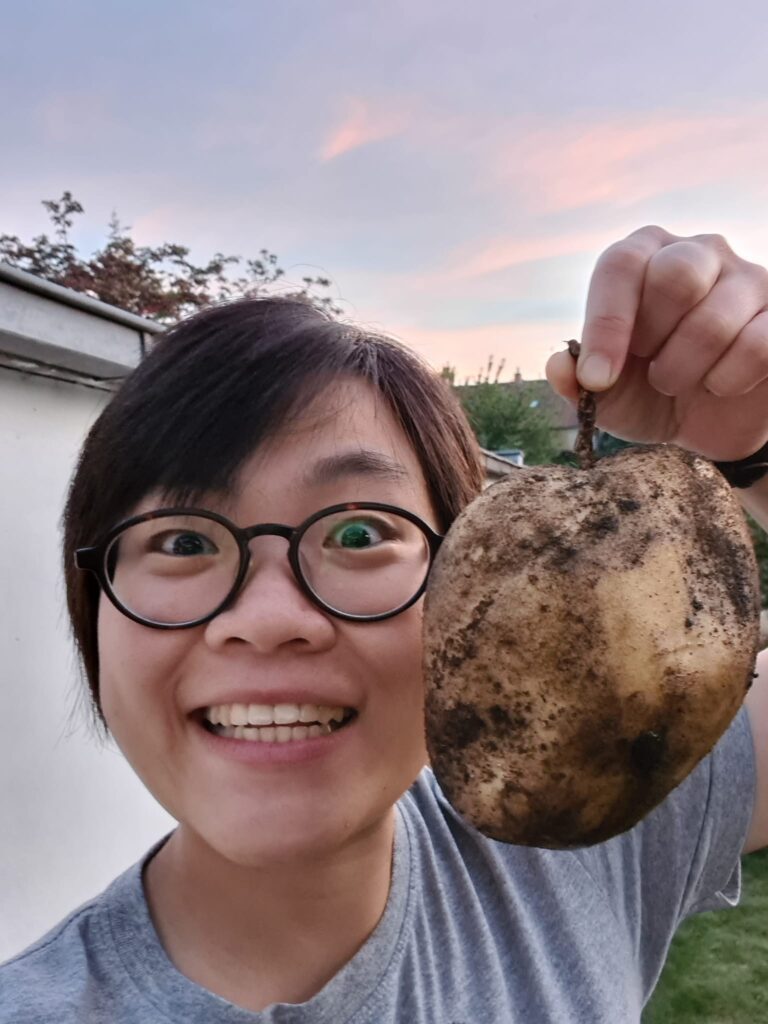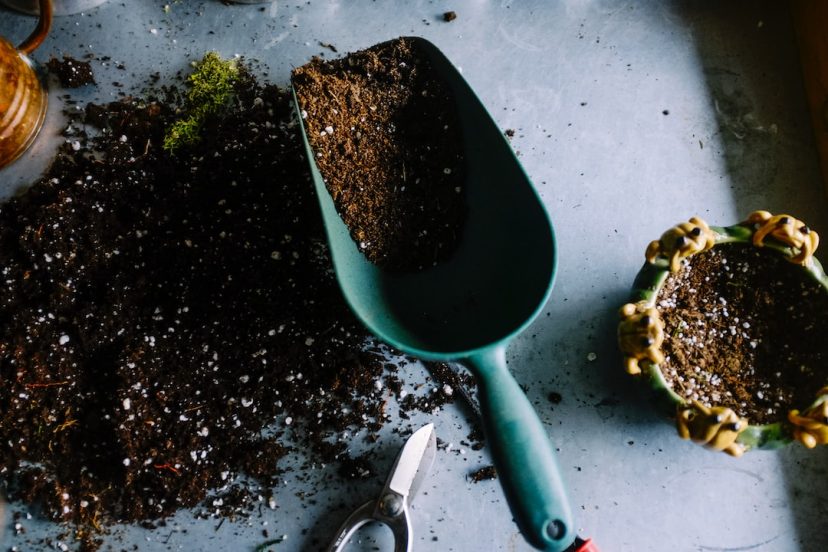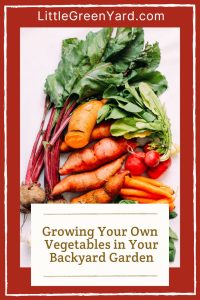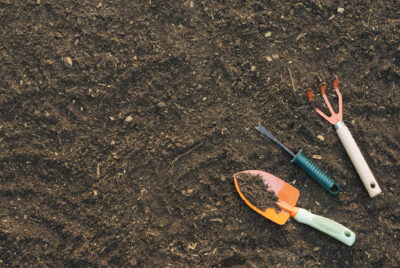Growing Your Own Vegetables in Your Backyard Garden
Growing your own vegetables can be a rewarding and fulfilling experience. Not only does it provide you with fresh and nutritious produce, but it also offers numerous other benefits. In this blog post, we will explore the various advantages of growing your own vegetables and provide you with tips and information on how to get started. From choosing the right vegetables for your backyard garden to managing pests and diseases, we will cover all the essential topics to help you become a successful vegetable gardener.
The Benefits of Growing Your Own Vegetables
Health benefits
One of the main benefits of growing your own vegetables is the positive impact it can have on your health. By growing your own produce, you have control over what goes into your food. You can avoid harmful pesticides and chemicals that are often used in commercial farming. You can also choose to only use organic fertilizers on your fruits and vegetables. Additionally, homegrown vegetables are typically fresher and more nutritious than store-bought ones, as they are harvested at their peak ripeness.
Cost savings
Another advantage of growing your own vegetables is the potential for cost savings. While there may be some initial investment in setting up a garden, the long-term savings can be significant. By growing your own produce, you can reduce your grocery bill and save money on expensive organic vegetables. If you are using natural remedies against potential pests, you do not even need to spend on synthetic pesticides. Gardening can also be an inexpensive hobby. Many beginners feel that it is daunting to start their own garden or that they have to spend a lot of money to get plants. However, that is not the case!! As highlighted in this blog post, there are numerous ways to create your garden at a low cost, where one has to be resourceful and creative!
Environmental benefits
Growing your own vegetables is also beneficial for the environment. Commercial agriculture often involves the use of synthetic fertilizers and pesticides, which can have negative effects on soil health and water quality. By growing your own vegetables, you can reduce your carbon footprint and contribute to a healthier planet.
Satisfaction and enjoyment
Finally, growing your own vegetables can bring a sense of satisfaction and enjoyment. There is something incredibly rewarding about planting a seed, nurturing it, and watching it grow into a thriving plant that produces delicious food. Gardening can also be a therapeutic activity that helps reduce stress and improve mental well-being.

Choosing the Right Vegetables for Your Backyard Garden
Climate considerations
When choosing vegetables for your backyard garden, it is important to consider your climate. Different vegetables have different temperature and sunlight requirements. Some vegetables thrive in cooler climates, while others prefer warmer temperatures. Research the specific needs of the vegetables you are interested in growing and choose ones that are suitable for your climate. In the temperate zones, if you have the extra cash and space, consider investing in a greenhouse for your yard. With it, you can start the growth of seedlings during Spring before planting them out in the late spring/early summer, or transfer your citrus fruit trees to the greenhouse during winter to ensure they do not die from the cold climate. Growing your vegetables is not only limited to the hot summer months! When the cooler weather sets in, there are also other winter vegetables that you can continue growing to ensure a continuous harvest.
If you live in a climatic zone where summers can get really really hot and warm, and you are not sure of what vegetables to plant, fret not! Check out this guide by the seed sage, where it introduces 15 different vegetables that you can grow in the heat!
Soil requirements
Another factor to consider when choosing vegetables is the soil in your garden. Different vegetables have different soil requirements in terms of pH level, drainage, and nutrient content. Conduct a soil test to determine the pH level and nutrient deficiencies in your soil. This will help you choose vegetables that are compatible with your soil type.
Personal preferences
Consider your personal preferences when choosing vegetables for your garden. Think about the vegetables you enjoy eating and prioritize those in your selection. Growing vegetables that you love to eat will make the gardening experience more enjoyable and rewarding. An easy vegetable to start with is Lettuce. These grown lettuce are easy to grow and you can reap what you sow just within weeks of planting and enjoy fresh lettuce in your salad.
Space limitations
Lastly, the amount of space you have available in your backyard will also influence your vegetable choices. Some vegetables, such as tomatoes and cucumbers, require more space to grow and may not be suitable for small gardens. Consider the size of your garden and choose vegetables that can be grown in containers or vertically to maximize space.
Vertical gardening
This is a technique that allows you to maximize your garden space by growing plants vertically instead of horizontally. One option is to use trellises or stakes to support vining vegetables, such as tomatoes or cucumbers. Another option is to use vertical planters or hanging baskets to grow vegetables vertically. You can also create a living wall by attaching containers or pockets to a vertical structure. Choose vegetables that are suitable for vertical growth, such as pole beans, peas, or indeterminate tomatoes. Provide sturdy supports, such as trellises or cages, to prevent plants from toppling over.
Preparing Your Soil for Planting
Soil testing
Before planting your vegetables, it is important to test your soil to determine its pH level and nutrient content. You can purchase a soil testing kit from a garden center or send a sample to a laboratory for analysis. The results of the soil test will help you determine if any amendments are needed to improve the quality of your soil, or get information on the pH of your soil and which fruits and vegetables are suitable to be grown (i.e., acidic soil are good for growing blueberries).
Soil amendments
Based on the results of your soil test, you may need to amend your soil to provide the necessary nutrients for your vegetables. Common soil amendments include compost, aged manure, and organic fertilizers. These amendments can improve soil structure, fertility, and drainage.
Composting
Composting is an excellent way to improve the quality of your soil and reduce waste. Compost is a nutrient-rich organic matter that can be added to your soil to improve its fertility. Start a compost pile in your backyard and add kitchen scraps, yard waste, and other organic materials. Over time, the compost will break down into a dark, crumbly substance that can be added to your garden beds.
Mulching
Mulching is another important step in preparing your soil for planting. Mulch helps retain moisture in the soil, suppresses weed growth, and regulates soil temperature. Organic mulches, such as straw or wood chips, can be spread around your plants to provide these benefits.
Starting Your Garden from Seeds or Seedlings
Pros and cons of each method
When starting a vegetable garden, you have the option of starting from seeds or purchasing seedlings from a nursery. Each method has its pros and cons. Starting from seeds allows you to have a wider variety of vegetable options and can be more cost-effective. However, it requires more time and effort, as you need to start the seeds indoors and transplant them later. Purchasing seedlings, on the other hand, allows you to skip the seed starting process and have plants ready for transplanting. However, it may limit your vegetable choices and can be more expensive.
Tips for starting seeds indoors
If you choose to start your vegetables from seeds, there are a few tips to keep in mind. Start seeds indoors 6-8 weeks before the last frost date in your area. Use seed starting trays or containers filled with a sterile seed starting mix. Keep the soil moist but not waterlogged and provide adequate light for the seedlings to grow.
Tips for transplanting seedlings
When it is time to transplant your seedlings into the garden, there are a few things to consider. Harden off your seedlings by gradually exposing them to outdoor conditions over a period of 7-10 days. Dig a hole in the garden bed that is slightly larger than the root ball of the seedling. Gently remove the seedling from its container and place it in the hole, making sure the top of the root ball is level with the soil surface. Backfill the hole with soil and water thoroughly.
Watering and Fertilizing Your Vegetables
Watering frequency and methods
Proper watering is essential for the health and productivity of your vegetable plants. How much to water greatly depends on the climate in your location. As a general rule of thumb, aim to keep the soil consistently moist but not waterlogged. Monitor the moisture level of the soil by sticking your finger into the soil up to the second knuckle. If it feels dry at that depth, it is time to water. If it is still moist, hold back on the watering, as excessive watering can lead to root rot and promote diseases. Water deeply and infrequently to encourage deep root growth. Opt to use drip irrigation or soaker hoses to deliver water directly to the roots.
Types of fertilizers
Fertilizing your vegetables is important to provide them with the necessary nutrients for growth. There are two main types of fertilizers: organic and synthetic. Organic fertilizers are derived from natural sources, such as compost, manure, or bone meal. Synthetic fertilizers are manufactured and contain specific ratios of nutrients. Both types of fertilizers have their advantages and disadvantages. Organic fertilizers have the advantage of improving soil health and promoting long-term sustainability. They release nutrients slowly over time and improve soil structure. However, they may not provide nutrients in the exact ratios needed by your plants and can be more expensive. Synthetic fertilizers, on the other hand, provide precise nutrient ratios and are often more affordable. However, they can be harmful to beneficial soil organisms and can contribute to water pollution if not used properly. Choose one that aligns with your gardening philosophy.
Managing Pests and Diseases in Your Garden
Common garden pests and diseases
One of the challenges of vegetable gardening is dealing with pests and diseases. Common garden pests include aphids, slugs, snails, and caterpillars. These pests can damage your plants by feeding on the leaves or fruits. Diseases, such as powdery mildew and blight, can also affect the health of your vegetables.
Prevention methods
The best way to manage pests and diseases is through prevention. Keep your garden clean and free of debris, as this can harbor pests and diseases. Practice crop rotation by planting different vegetables in different areas of your garden each year. This helps prevent the buildup of pests and diseases in the soil. Use floating row covers or netting to protect your plants from insect pests.
Pest control methods
If you do encounter pests in your garden, there are several natural pest control methods you can try. Handpicking pests off your plants is an effective method for small infestations. You can also use insecticidal soaps or neem oil sprays to control pests. Beneficial insects, such as ladybugs and lacewings, can be introduced into your garden to help control pest populations. In severe cases, chemical pest control methods may be necessary. However, it is important to use pesticides responsibly and follow the instructions on the label. Choose pesticides that are specifically labeled for the pests you are targeting and apply them according to the recommended rates. Be mindful of the potential impact of pesticides on beneficial insects and the environment.
Harvesting and Storing Your Vegetables
Harvesting at the right time
Harvesting your vegetables at the right time is crucial for optimal flavor and quality. Each vegetable has its own signs of ripeness, so it is important to research the specific harvesting guidelines for the vegetables you are growing. Generally, vegetables should be harvested when they are fully mature but before they become overripe.
Proper storage methods
After harvesting your vegetables, it is important to store them properly to prolong their freshness. Some vegetables, such as tomatoes and peppers, can be stored at room temperature. Others, like leafy greens and root vegetables, should be stored in the refrigerator. Use breathable containers or bags to store your vegetables and avoid washing them until just before use.
Preserving excess produce
If you have an abundance of vegetables from your garden, consider preserving them for later use. There are several methods of preserving vegetables, including canning, freezing, and drying. Canning involves packing vegetables into jars and processing them in a water bath or pressure canner. Freezing involves blanching vegetables briefly in boiling water and then freezing them in airtight containers. Drying involves removing moisture from vegetables by air drying or using a dehydrator.
Companion Planting: Growing Vegetables Together
What is Companion planting
Companion planting is the practice of growing different plants together for mutual benefit. Certain plants have natural affinities for each other and can help improve each other’s growth and health. For example, some plants repel pests or attract beneficial insects by confusing their sense of smell or taste, while others provide shade or support for climbing plants or attract beneficial insects, such as bees or ladybugs, which can help with pollination and pest control.
Examples of compatible vegetable pairings
There are many examples of compatible vegetable pairings in companion planting. For instance, planting marigolds near tomatoes can help repel nematodes and aphids. Planting basil near tomatoes can improve their flavor and repel pests. Planting radishes near cucumbers can deter cucumber beetles. One classic example is planting the three sisters: Corn, Beans and Squash. Corn provides tall stalks for the beans to climb so that they are not out-competed by sprawling squash vines. Beans provide nitrogen to fertilize the soil while also stabilizing the tall corn during heavy winds. The large leaves of squash plants shade the ground which helps retain soil moisture and prevent weeds.
Sustainable Gardening Practices for a Healthier Planet
Sustainable gardening is a practice that aims to minimize the negative impact on the environment and promote long-term sustainability. It involves using organic and natural methods to grow plants, conserving water and energy, and reducing waste. By using organic methods, you can improve soil health and promote biodiversity. Conserving water and energy helps reduce your carbon footprint and save resources. Reducing waste through composting that you can use as natural fertilizers on your garden, and recycling helps minimize landfill contributions.
If you don’t have a garden, but still wants to grow your own food, there are several methods to do so, including using the hydroponics systems or indoor vegetable growing towers, or simply using the space of the window ledge to grow some of your favourite herbs. When there’s a will, there’s always a way!
Conclusion
In conclusion, growing your own vegetables offers numerous benefits for your health, wallet, and the environment. By choosing the right vegetables for your backyard garden, preparing your soil properly, starting your garden from seeds or seedlings, and implementing proper watering and fertilizing techniques, you can enjoy a bountiful harvest of fresh and nutritious produce. So why wait? Start a backyard garden today and reap the rewards of growing your own vegetables! Not only will you have access to fresh, organic produce, but you will also save money on grocery bills and reduce your carbon footprint. Plus, gardening can be a fun and rewarding hobby that allows you to connect with nature and enjoy the satisfaction of watching your plants grow. And it is also a great way to involve your kids into a fun afternoon activities where they learn all about growing vegetables and taking care of a garden.So don’t hesitate, get started on your backyard garden and enjoy the many benefits it has to offer.
FAQs
Q: What are the benefits of growing vegetables in a garden?
A: Growing vegetables in a garden can provide fresh and healthy produce, save money on grocery bills, and promote physical activity and outdoor time.
Q: What are some easy vegetables to grow in a garden?
A: Some easy vegetables to grow in a garden include tomatoes, cucumbers, zucchini, lettuce, and green beans.
Q: What are some tips for growing vegetables in a garden?
A: Some tips for growing vegetables in a garden include choosing a sunny location, preparing the soil properly, watering regularly, and fertilizing as needed.
Q: What are some common pests and diseases that can affect vegetable gardens?
A: Common pests and diseases that can affect vegetable gardens include aphids, slugs, snails, powdery mildew, and tomato blight.
Q: What are some organic methods for controlling pests and diseases in a vegetable garden?
A: Some organic methods for controlling pests and diseases in a vegetable garden include using companion planting, practicing crop rotation, using natural predators like ladybugs and praying mantises, and using organic pesticides and fungicides.





